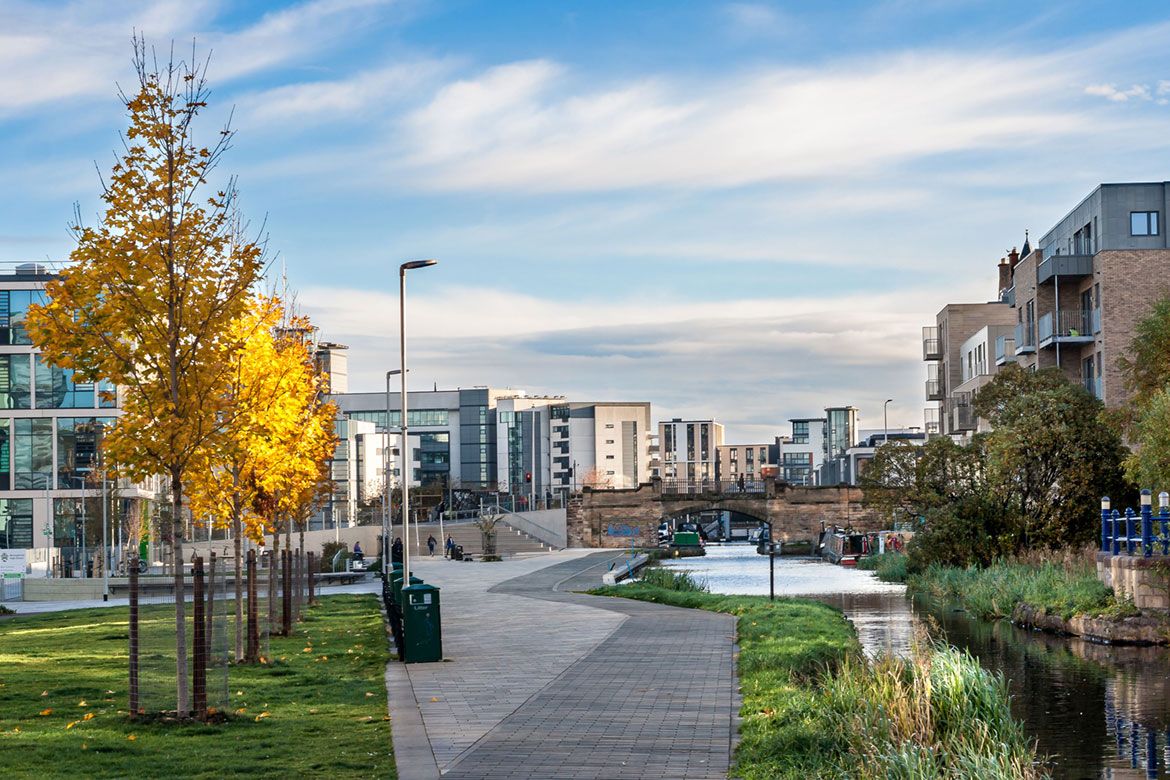The way we plan and design the built environment can have a profound impact on people’s health and wellbeing. By working together and taking a ‘whole systems approach’, Scottish public authorities can improve health and wellbeing and reduce health inequalities, says Susan Rintoul, Project Officer in the Planning for Place Programme.
The places we live, work and play affect our health and wellbeing throughout our lives. Whilst our health and wellbeing are shaped by many things – individual, cultural, community, environmental and global factors – the way that we plan and design the built environment can have a significant impact, both good and bad. Some aspects of place nurture and promote good health – access to greenspaces, for example. Other aspects are detrimental, such as poor air quality from busy roads.
The importance of place in health and wellbeing is increasingly recognised in national and local policies and priorities. The new requirements of the Planning (Scotland) Act 2019, the proposed objectives of the National Planning Framework and the publication of Scotland’s Public Health Priorities have now put a clear obligation on land use planning and public health to work together.
Alongside this, the Covid-19 pandemic has highlighted the importance of having a good quality local environment for our physical and mental health.

Planning and public health can deliver on many of the ambitions for Scotland but they can only do this through better joined up working. There is a need to work on a whole systems approach. Public health practitioners and land use planners need to share knowledge and build links through starting conversations and working together. This will involve system change and there is a need to define where these links are and make them explicit.
As a starting point, a new briefing has been developed by the Spatial Planning, Health and Wellbeing Collaborative to support collaborative working between public health and land use planning. The briefing aims to raise awareness of the impact that places where people live, work and play have on their health and wellbeing. It promotes a greater understanding of the shared ambitions between land use planning and public health, and provides practical guidance for land use planners, public health practitioners and policy makers.
What’s in the briefing?
The briefing introduces public health to the planning system and land use planners to public health, and sets out where key legislation and policy requirements overlap. It highlights the opportunities for more integrated working and illustrates how this can help deliver greater equality in health and wellbeing and sustainability outcomes, while also providing the practical steps for achieving this.
The paper also introduces the Place and Wellbeing Outcomes developed by the Spatial Planning, Health and Wellbeing Collaborative. The outcomes provide a consistent and comprehensive focus for priorities for closer links between place and wellbeing. Based on the Place Standard Tool, they demonstrate the range of factors impacting the wellbeing of people and planet across five overarching themes of movement, spaces, resources, civic and stewardship. They also align with Scottish Government aspirations set out in the Place Principle and 20 minute neighbourhoods.

The Place and Wellbeing Outcomes are:
- Movement – active travel; public transport; traffic and parking
- Spaces – streets and spaces; natural spaces; play and recreation
- Resources – services and support; work and economy; housing and community
- Civic – identity and belonging; feeling safe
- Stewardship – care and maintenance; influence and control
Six opportunities for closer collaboration between public health and land use planners
1. Setting the direction of planning policy
There are opportunities to engage on the direction of the forthcoming National Planning Framework to initiate closer collaboration between planning and health, and give planners a national policy foundation to enable implementation in Local Development Plans and in determining major planning applications. The recently published position statement states that “National Planning Framework 4 will be redesigned to support the population’s health and wellbeing and address the longstanding health inequalities.” This provides an opportunity for a whole system approach to share knowledge and build links through starting conversations and working collaboratively.
2. Embedding the Place and Wellbeing Outcomes
There is an opportunity to embed the Place and Wellbeing Outcomes into planning. They provide a consistent and comprehensive focus for priorities for closer links between place and its impact on the wellbeing of people and planet.
3. Defining explicit links between planning and public health
There is currently a lack of explicit links between planning and public health in many areas, which gives us an opportunity to define where they should be. Examples could include involving public health in the creation of Local Development Plans and encouraging public health evidence and support in development management (planning applications), or engagement of planners in health board/Health and Social Care Partnership strategic plans.
Section 2 and 3 of the briefing highlight areas where there are opportunities for links to be developed. Creating these links will support the implementation of the Place and Wellbeing Outcomes.
4. Combined skills development and mutual support
There are opportunities to address the lack of awareness between planning and public health of each other’s roles through combined skills development and more ‘on the job’ interaction to forge closer links.
5. Measurement and performance
There is opportunity for stronger cross-working on measurement and performance of public health and planning. The National Planning Framework 4 will introduce new outcomes and ways of measuring their success will need to be developed.
6. COVID-19 recovery and community engagement
There is an opportunity as we recover from the Covid-19 pandemic to build back better by working with communities to learn how their relationship with place has changed.
-
Place Network
For those interested in the importance of place as a working approach to delivering national outcomes around improved wellbeing and inclusive growth.
-
Community Planning Network in Scotland
A group for people working in community planning to share good practice, ask questions and find advice from colleagues from all over Scotland.